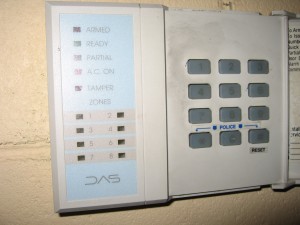AT&T–the first telco to offer home automation as a mainstream product
Article
AT&T to launch Digital Life in 15 markets, hopes to enter home automation field | Engadget
From the horse’s mouth
AT&T
My Comments
AT&T has just become one of the first main telecommunications companies to offer the concept of home security and automation to their customers. Initially this service will appear in 15 markets after they thought of eight markets. They will then achieve a goal to have 50 US markets switched on to this service by end of 2013. This is although a handful of ISPs including a few French and British operators are running home security and automation as the “fifth play” service.
This service, known as AT&T Digital Life will feature the 24/7 monitored alarm service which will let you and the police or fire brigade know about emergencies including where they occur in your home like what most monitored alarm systems are capable of doing. As well, the service will let you manage and control home security and automation functions through the use of programs and alerts including non-time-specific events such as you opening the garage door causing lights to come on or the heating or cooling to be adjusted to the “comfort” setting.
They reckon that this will be a wireless-centric experience with a variety of sensors and controlled devices including movement, glass-break, carbon-monoxide, water-leak sensors with controlled devices including lighting and heating controllers and electromechanical door locks.
What would typically happen is that the telcos and similar firms would resell monitoring services from established alarm-monitoring companies like ADT and Chubb. Then they would integrate the control functionality through a Web dashboard that has their branding on it. This could easily be facilitated through the security monitoring firms that the telecommunications or cable-TV firm engage to protect their premises having their business relationship strengthened by being in a position to wholesale the service to the telco’s retail customers.
Similarly the wired-broadband link provided by the telco, rather than a separately-sold link could end up as the monitoring link. This can be augmented with the use of a wireless-broadband link sold to the customer as the mobile solution for an “eggs in one basket” deal serving as a fail-safe link.
I would be observing which ISPs, telcos or cable-TV providers would offer one or more home-security and automation packages as an attachment to a multiple-play ( fixed and mobile) telephony, TV and (fixed and mobile) Internet service package. Here, I would observe whether these services are broadly advertised across common media like the TV ads or large display ads in the womens’ magazines and local newspapers.

